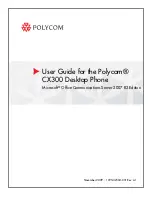
h3h5_in_the_lan.fm
A31003-H3590-S100-7-7620, 06/2012
HiPath 3000/5000 V9, Service documentation
13-71
Nur für den internen Gebrauch
HiPath 3000/5000 in the LAN Network
Administration & Fault Management
General traps, such as MSG_GW_SUCCESSFULLY_STARTED, are sent as “information”.
Reboot traps are always “critical”, “major” or “minor” errors.
Threshold/resource traps occur as follows: When an event is received, the trap is sent as either
“Warning”, “Minor” or “Major”. If the trap recurs, reminders are sent (at increasing intervals) with
a weighting that is at least the same or higher than the initial trap. If the event was corrected
(for example, “Link up” or sufficient RAM was provided), the trap is sent with the category
“Cleared”.
SNMP Functions
The SNMP functions include:
●
With MIB browser and standard MIB (based on RFC1213):
–
querying and modifying standard MIB 2 parameters
●
With MIB browser and private MIB:
–
querying and modifying HG 1500’s private MIB parameters
●
With HiPath 3000 Manager E:
–
defining communities of standard parameters (classes of service)
–
defining trap communities and stations to which the traps are sent
–
defining the trap level for various trap groups (error sensitivity)
●
With trap receiver:
–
receiving traps
MIBs also contain a brief commentary explaining the meaning of each parameter.
The following is a list of some parameters:
●
mgmt > mib-2 > system > sysUpTime: time since the last HG 1500 startup
●
mgmt->mib-2->ip->ipRouteTable: HG 1500 routing table
HG 1500 sends SNMP traps (diagnostic and error messages) to the stations configured under
“SNMP > Trap Communities”. These messages are transmitted in accordance with the severity
levels set under “SNMP”.
Содержание HiPath 3000 Series
Страница 1252: ......
















































